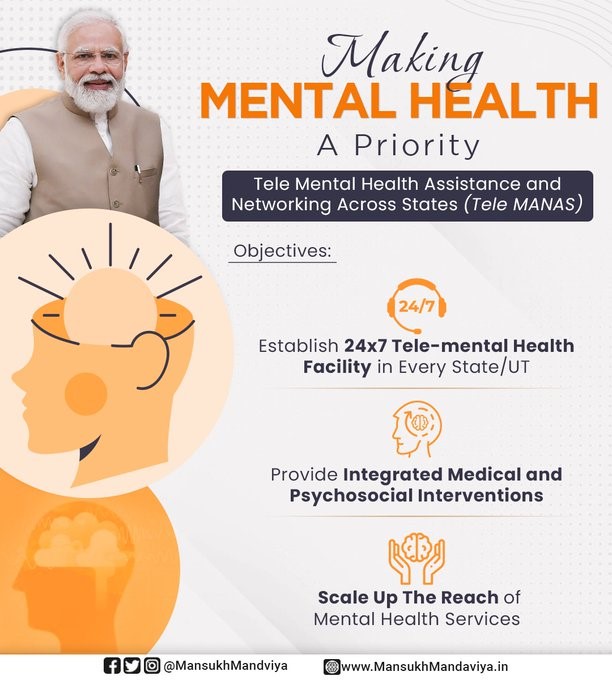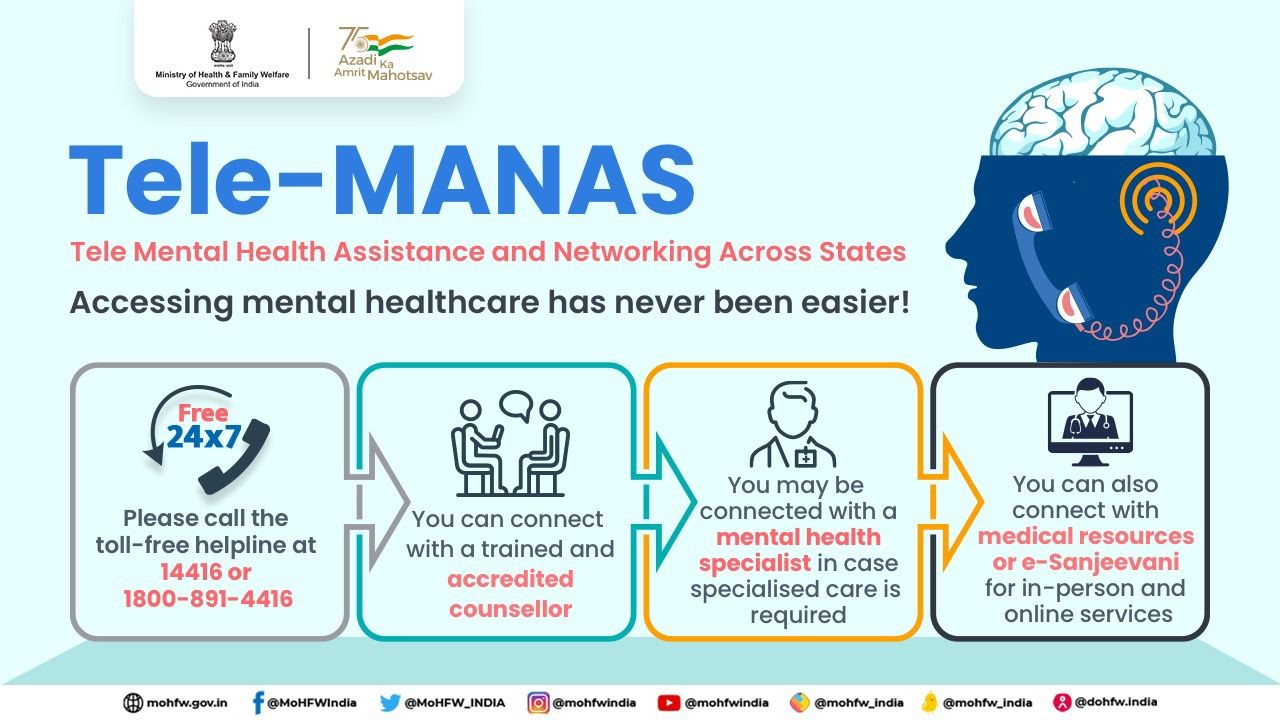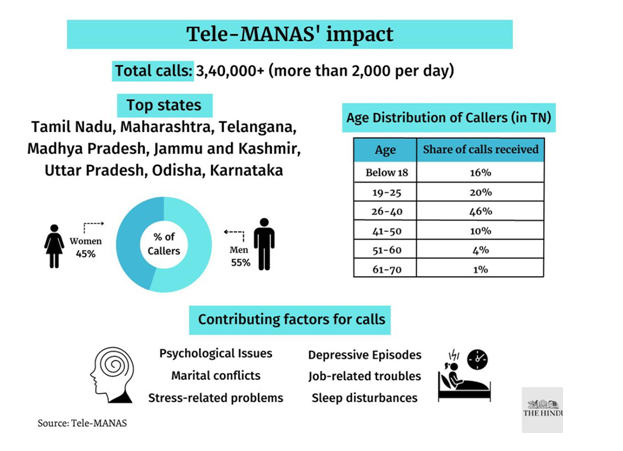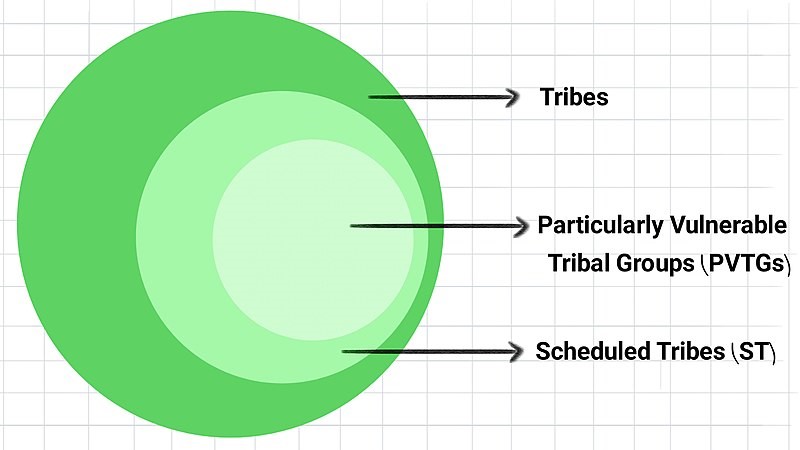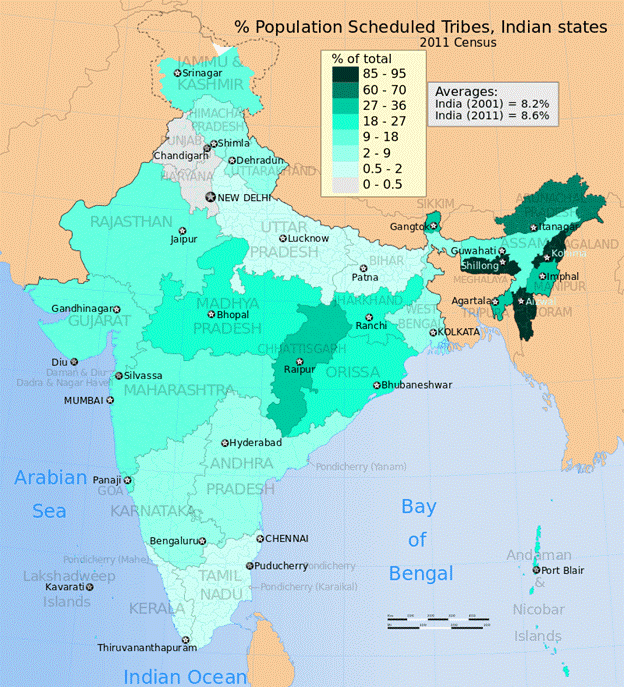- PCA framework extended for Govt. NBFC
- Direct Tax Collections surged by 21.8%
- One Year of Tele Manas Seva
- Baiga Tribal group gets habitat rights
- CycloneGenesis
- Dancing Frog
- Hemochromatosis
PCA framework extended for Govt. NBFC
Context:
The Reserve Bank of India (RBI) has extended the Prompt Corrective Action (PCA) framework to Government Non-Banking Financial Companies (NBFCs), with an exclusion for those in the Base Layer, starting from October 1, 2024.
PCA Framework Expansion
- Scope: Government-owned NBFCs, including PFC, REC, IRFC, and IFCI, will now fall under the PCA framework.
- Impact: These NBFCs will face constraints related to dividend distribution and profit remittances.
- Additionally, limitations on equity infusion for promoters and shareholders, as well as the requirement for leverage reduction, will be imposed. Issuing guarantees or taking contingent liabilities on behalf of group companies will also be restricted.
What is Prompt Corrective Action (PCA) Framework?
- Definition: The PCA Framework serves as a watchlist of financially weak banks as identified by the central bank.
- Regulatory Measures: When a bank falls under PCA, the regulator enforces restrictions on its operations, such as curbing lending activities.
- Coverage: The PCA Framework applies exclusively to commercial banks and does not encompass cooperative banks or non-banking financial companies (NBFCs).
- History: The RBI introduced the PCA Framework in December 2002 as a mechanism for early intervention, inspired by the US Federal Deposit Insurance Corporation’s PCA framework.
- Last Update: The revised PCA framework became effective on January 1, 2022.
- Monitoring Areas: The revised framework places increased emphasis on capital adequacy, asset quality, and leverage.
- Risk Threshold: The RBI has updated the level of capital adequacy ratio shortfall that triggers classification into the “risk threshold three” category.
Trigger Points for PCA Inclusion
- Capital-to-Risk Weighted Assets Ratio (CRAR): CRAR measures a bank’s capital in relation to risk-weighted assets. If CRAR falls below 9 percent, the RBI takes action, including the submission of a capital restoration plan, restrictions on business activities, and dividend payments. Additional steps may follow if CRAR is below 6 percent but equal to or above 3 percent.
- Net Non-Performing Assets (NPA): If net NPAs exceed 10 percent but remain below 15 percent, the RBI initiates measures to reduce bad loans and strengthen credit appraisal skills.
- Return on Assets (RoA): If RoA drops below 0.25 percent, restrictions are imposed on deposit renewal, access to costly deposits and CDs, and the bank’s entry into new lines of business.
Rationale for Expansion
- Growing Significance: NBFCs have witnessed substantial growth and have strong linkages with various financial segments.
- Supervisory Enhancement: In 2022, the RBI introduced the PCA framework for NBFCs to strengthen supervisory tools, with the objective of facilitating timely supervisory intervention and mandating corrective actions to restore financial health.
Market Discipline: The framework serves as a mechanism for effective market discipline, ensuring that NBFCs adhere to financial prudence.
Direct Tax Collections surged by 21.8%
Context:
India’s net direct tax collections have demonstrated remarkable growth, surpassing over 50% of this fiscal year’s budget estimates. By October 9, the collections had increased by 21.8% to reach ₹9.57 lakh crore.
Factors Driving Tax Collections
- Personal Income Tax Growth: The collection of personal income tax has surged by 32.5%, reflecting increased income levels and greater tax compliance among individuals.
- Corporate Tax Revenues: Corporate tax collections have grown by 12.4%, driven by improved corporate earnings and overall economic recovery.
- Budget Surpassing Collections: The robust growth in direct tax collections has already exceeded 50% of the budget estimates for the fiscal year.
What are Direct Taxes?
Direct taxes are a category of taxes where the entity liable for the tax payment and the entity bearing the tax burden are the same. These taxes are paid directly to the government and cannot be transferred to another party.
Types of Direct Taxes in India
- Income Tax: Income tax is based on an individual’s age and earnings, with various tax slabs determined by the Government of India. Taxpayers must file Income Tax Returns (ITR) annually, and penalties are imposed for non-compliance.
- Wealth Tax: Wealth tax is an annual tax based on property ownership and its market value, not dependent on income generation. Various entities, including corporate taxpayers and Hindu Undivided Families (HUFs), are subject to this tax.
- Estate Tax: Also known as Inheritance Tax, it is levied based on the value of an individual’s estate or the assets left behind after their death.
- Corporate Tax: Domestic and foreign companies that earn income in India are subject to corporate tax. It encompasses various sub-taxes, including Securities Transaction Tax (STT), Dividend Distribution Tax (DDT), Fringe Benefits Tax, and Minimum Alternate Tax (MAT).
- Capital Gains Tax: Capital gains tax is applied to income earned from the sale of assets or investments. It distinguishes between short-term and long-term gains based on the holding period of the assets.
Advantages of Direct Taxes
- Economic and Social Balance: Direct taxes use balanced tax slabs according to an individual’s income and age, promoting economic and social equity. Exemptions are in place to address income inequalities.
- Productivity: With an increasing working population, direct taxes generate higher returns, making them a productive source of government revenue.
- Inflation Control: During periods of inflation, the government can increase taxes to reduce consumer demand, thus curbing inflation.
- Certainty: Direct taxes provide clarity to both taxpayers and the government regarding the amounts to be paid and collected.
- Equal Distribution of Wealth: The government imposes higher taxes on those who can afford them, using the additional revenue to support impoverished segments of society.
Disadvantages of Direct Taxes
- Evasion: Some individuals may evade taxes by submitting false income returns, undermining the tax system’s integrity and accountability.
- Arbitrariness: The Finance Minister’s discretion in setting progressive tax rates can be arbitrary, potentially creating a burden on lower-income individuals.
3. Disincentive: High tax rates can discourage savings and investments, potentially hampering economic growth and business development.
One Year of Tele Manas Seva
Context:
The National Tele-MANAS program has successfully provided counseling to over 350,000 individuals to date, with more than 1,000 calls received on its helpline every day.
About Tele-MANAS
Tele-MANAS: India’s 24/7 Mental Health Helpline
- World Mental Health Day is observed annually on October 10th, and the theme for 2023 is ‘Mental Health is a Universal Human Right.’
- In response to the growing mental health crisis exacerbated by the COVID-19 pandemic, India launched the Tele-MANAS program on World Mental Health Day in 2022.
- This initiative is designed to offer counseling services to those in need through its network of 44 Tele-MANAS cells.
These cells consist of two key tiers:
- 1. State Tele-MANAS Cells: Staffed by trained counselors, these cells offer immediate care to individuals seeking support for mental health concerns.
- District Mental Health Programme (DMHP): This tier is comprised of mental health professionals, including psychologists, clinicians, and psychiatrists, who provide specialized care to those with more complex needs.
The National Institute of Mental Health and Neurosciences (NIMHANS) in Bengaluru serves as the nodal center for Tele-MANAS, with the International Institute of Information Technology (IIITB) in Bengaluru handling the technical aspects of the helpline.
Need for the Initiative
- The motivation behind launching Tele-MANAS stemmed from the mental health challenges exacerbated by the COVID-19 pandemic.
- Factors such as isolation, financial instability, and illness have contributed to increased levels of anxiety, depression, and substance use disorders.
Shockingly, estimates indicate that a significant percentage of the Indian population—ranging from 70% to 92%—does not receive the necessary medication or treatment for various mental health conditions.
Other Government Initiatives
- National Mental Health Programme (NMHP): This program aims to be implemented in 704 districts, with support provided to States/Union Territories through the National Health Mission.
- It establishes Community Health Centers (CHC) and Primary Health Centers (PHC) to address outpatient services, assessments, counseling, psycho-social interventions, continuing care, and support for individuals with severe mental disorders, in addition to providing drugs, outreach services, and ambulance services.
- National Tele Mental Health Programme: In the 2022-2023 budget, India’s Finance Minister announced this program to enhance access to quality mental health counseling and care services.
- Mental Healthcare Act, 2017: This legislation aims to provide mental healthcare services for individuals with mental illness.
4. KIRAN: The Ministry of Social Justice and Empowerment has introduced a 24/7 toll-free helpline, KIRAN, designed to support individuals experiencing anxiety, stress, depression, suicidal thoughts, and other mental health concerns.
Baiga Tribal group gets habitat rights
Context: Recognition of Habitat Rights for Baiga PVTG in Chhattisgarh
What Are Habitat Rights?
Habitat rights encompass a range of privileges granted to indigenous communities, ensuring their control and protection of specific aspects of their lives and environments.
These rights include:
- Customary Territory: Granting authority over their traditional lands.
- Socio-Cultural Practices: Preserving cultural heritage and practices.
- Economic and Livelihood Means: Protecting traditional sources of income.
- Intellectual Knowledge of Biodiversity and Ecology: Safeguarding their ecological wisdom.
- Traditional Knowledge of Use of Natural Resources: Protecting knowledge of resource usage.
- Protection and Conservation: Safeguarding their natural and cultural heritage.These rights serve to preserve and transmit traditional livelihood and ecological knowledge from generation to generation. Additionally, they facilitate coordination among various government programs, empowering Particularly Vulnerable Tribal Group (PVTG) communities to enhance their habitats.
About Baiga PVTG: In this section, we’ll delve into the Baiga PVTG community and their habitat rights.
Baiga PVTG Community: The Baiga community primarily resides in multiple districts in Chhattisgarh and Madhya Pradesh. Specifically, they inhabit the Rajnandgaon, Kawardha, Mungeli, Gaurela-Pendra-Marwahi (GPM), Manendra-Bharatpur-Chirmiri, and Bilaspur districts in Chhattisgarh.
Habitat Rights
- Habitat rights for the Baiga community were granted under section 3(1) (e) of The Scheduled Tribes and Other Traditional Forest Dwellers (Recognition of Forest Rights) Act, 2006, also known as the Forest Rights Act (FRA).
- This legislation defines “habitat” to include areas that form their customary habitat, reserved forests, and protected forests.
Legal Protection
- Habitat rights for the Baiga PVTG are legally protected under various acts, including the Forest Conservation Act, Land Acquisition law of 2013, and the SC/ST Prevention of Atrocities Act.
- These rights provide an additional layer of legal protection.
Enforcement
Should any development activity impede the Baiga PVTG’s habitat rights, they can address the issue through the Forest Rights Act and, if necessary, seek legal resolution.
Number of PVTG with Recognized Habitat Right
This section discusses the extent of habitat rights recognition among PVTGs in India.
Habitat Rights for PVTGs
Out of the 75 Particularly Vulnerable Tribal Groups (PVTGs) in India, only three have been granted habitat rights. The Bharia PVTG in Madhya Pradesh was the first to receive these rights, followed by the Kamar tribe, and now the Baiga tribe in Chhattisgarh.
About Particularly Vulnerable Tribal Groups (PVTG)
PVTGs are defined as tribal communities with technological backwardness, stagnant or declining population growth, extremely low literacy rates, and subsistence-level economies.
- These groups predominantly inhabit isolated, remote, and challenging areas in small, scattered hamlets or habitats.
- There are 75 PVTGs distributed across 18 states and one Union Territory in India.
Source for Good PVTG MAP: https://geoportal.natmo.gov.in/image-preview?nid=3709
Cyclone¬Genesis
Definition
Cyclogenesis is the development or strengthening of cyclonic circulation in the atmosphere (a low-pressure area).
Types
Cyclogenesis is an umbrella term for at least three different processes, all of which result in the development of some sort of cyclone, and at any size from the microscale to the synoptic scale.
- Tropical cyclones form due to latent heat driven by significant thunderstorm activity, developing a warm core.
- Extratropical cyclones form as waves along weather fronts before occluding later in their life cycle as cold core cyclones.
- Mesocyclones form as warm core cyclones over land, and can lead to tornado formation.
- Waterspouts can also form from mesocyclones, but more often develop from environments of high instability and low vertical wind shear.
Mechanisms
The mechanisms of cyclogenesis vary depending on the type and scale of the cyclone.
Some common factors that influence cyclogenesis are:
- Jet stream: The jet stream is a band of fast-moving air in the upper troposphere that can create areas of divergence and convergence aloft, which in turn affect the surface pressure and vorticity.
- Fronts: Fronts are boundaries between air masses of different temperature, humidity, and density. Fronts can trigger cyclogenesis by creating waves or disturbances along them, which can then grow into cyclones.
- Convection: Convection is the upward movement of warm and moist air due to buoyancy. Convection can enhance cyclogenesis by releasing latent heat, increasing vorticity, and lowering surface pressure.
- Topography: Topography is the shape and features of the land surface. Topography can influence cyclogenesis by creating lee-side troughs, blocking flows, or modifying fronts.
Dancing Frog
Introduction:
- Recently, research has revealed the precarious situation of the dancing frog, a remarkable amphibian genus in the Western Ghats region of India.
- This unique frog species is facing significant threats that have elevated its status to one of the most endangered amphibian genera on a global scale.
About the Dancing Frog:
- The dancing frog is part of the top five most critically threatened amphibian genera worldwide, with a staggering 92% of its species falling within the threatened category.
- The male frogs of this genus exhibit a distinctive courtship behavior known as “foot flagging.”
- This behavior involves stretching one hind leg at a time and rapidly waving their webbed toes, an intricate display that serves the dual purpose of attracting potential mates and deterring competitors.
Threats to the Dancing Frog:
- The survival of the dancing frog is imperiled by a multitude of human-induced factors.
- These include invasive species, land-use changes, fluctuations in weather patterns, the spread of infectious diseases, water and light pollution, and the expansion of infrastructure projects.
- These threats have collectively taken a toll on the frog’s populations, pushing them to the brink of extinction.
Habitat Preferences:
- The dancing frog exhibits a strong preference for habitats with a dense canopy cover, requiring at least 70-80% coverage to thrive.
- This specific habitat requirement further complicates their conservation efforts.
IUCN Status:
- Given the gravity of the situation, the dancing frog is currently classified as “Critically Endangered” by the International Union for Conservation of Nature (IUCN).
This designation highlights the urgent need for conservation measures to safeguard this unique and vulnerable amphibian genus in the Western Ghats.
Hemochromatosis
Introduction:
Hemochromatosis, a condition often referred to as ‘bronze diabetes,’ is a hereditary disorder characterized by the gradual accumulation of excess iron in the body.
Types of Hemochromatosis:
- Hereditary Hemochromatosis
Hereditary Hemochromatosis is primarily the result of a genetic mutation in the HFE gene. This mutation leads to an abnormal increase in iron absorption in the intestines, resulting in iron overload over time.
- Secondary Hemochromatosis
Secondary Hemochromatosis, on the other hand, is typically induced by various external factors. These factors may include repeated blood transfusions, excessive iron supplementation, or specific medical conditions that disrupt the body’s iron regulation. Iron accumulation can occur rapidly in this form, affecting organs similarly to the hereditary type.
Common Symptoms of Hemochromatosis
- Hemochromatosis symptoms typically manifest between the ages of 30 and 60.
- Some of the common symptoms experienced by individuals with this condition include:
- Chronic Fatigue: Persistent and unexplained tiredness is a prevalent symptom, often hindering daily activities.
- Unexplained Weight Loss: Individuals may experience weight loss without any apparent cause.
- Weakness: Generalized weakness is a common complaint among those with hemochromatosis.
Joint Pain: Joint pain can be another uncomfortable and recurrent symptom associated with the condition.
Conclusion
Understanding hemochromatosis involves recognizing its hereditary and secondary forms, as well as being aware of the common symptoms that may signal its presence. Early detection and appropriate management are crucial in addressing this condition.



